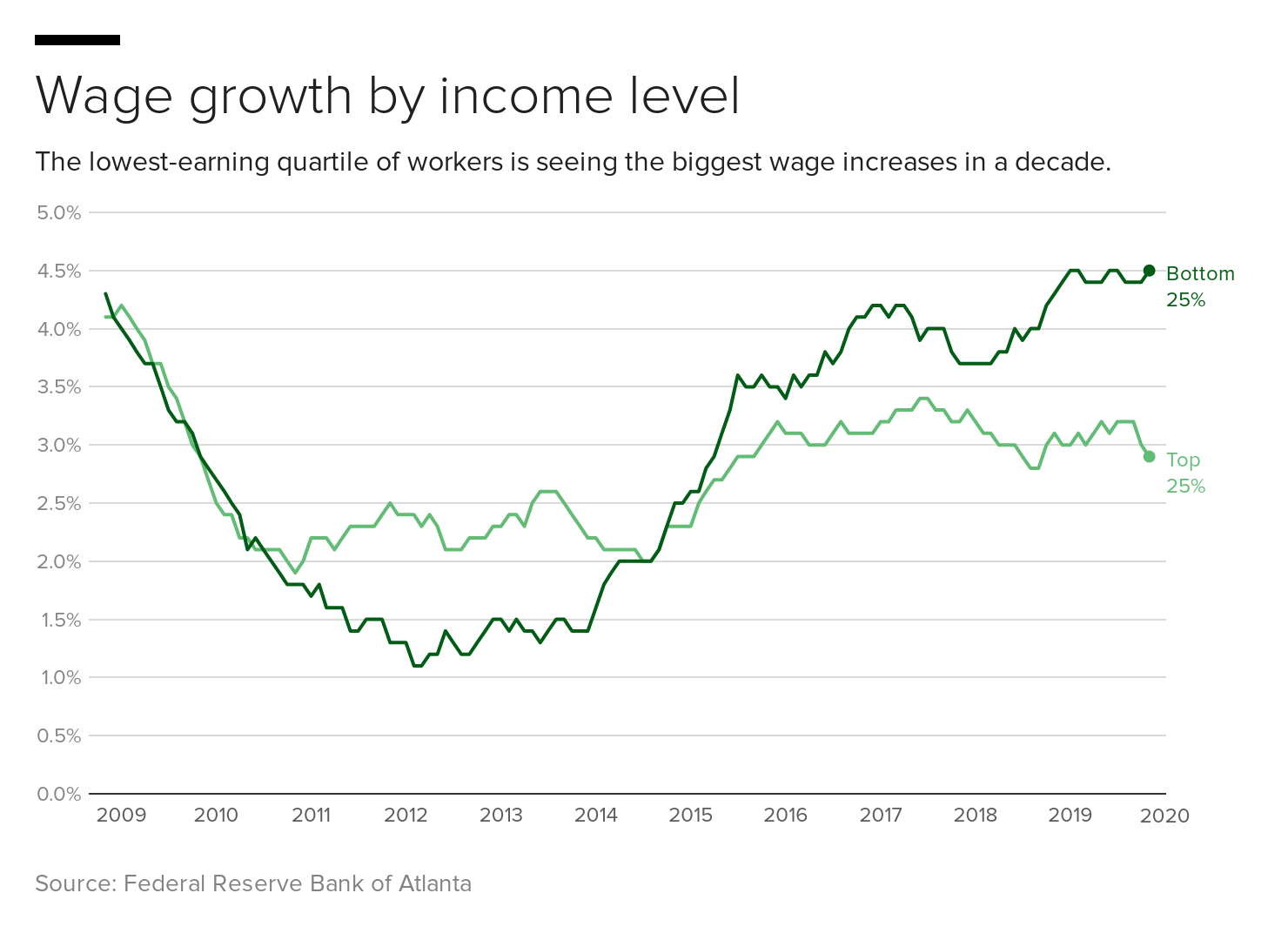News Item
Pay for the bottom 25% of wage earners rose 4.5% in November from a year earlier, according to the Federal Reserve Bank of Atlanta. Wages for the top 25% of earners rose 2.9%. Similarly, the Atlanta Fed found wages for low-skilled workers have accelerated since early 2018, and last month matched the pace of high-skill workers for the first time since 2010.
I think my fellow posters are being unfair about this information, Ward.
The wages' going up at a steeper clip at the bottom than the top is important! It's been doing it since 2014, under Obama...

That's good news for the 53 million Americans who work in low-wage jobs, who represent about 44% of the country's adult, working-age population, according to a study earlier this month from the Brookings Institution. Their median wage is $10.22 per hour, or about $18,000 annually. That's above the federal minimum wage of $7.25 an hour but well below what's considered the living wage for many regions.
So, if they keep increasing their earnings at 4.5%/year for a decade, they'll be making $27,954/year.
Meanwhile, if the top 25% keep getting their paltry 2.9% raise on $100,000/year, at the end of that same decade, they'll be making $133,093.
Oops! They'll see a bigger jump at the lower increase than the bottom quarter
makes after 10 years of more growth.
So, sure, Ward, it's great that the increase is at a higher rate, but...it would need to be a whole lot more than that 4.9% to even touch the divide.
This? It just slows down the increase in the gap between the rich and the poor. It doesn't even stop it.
